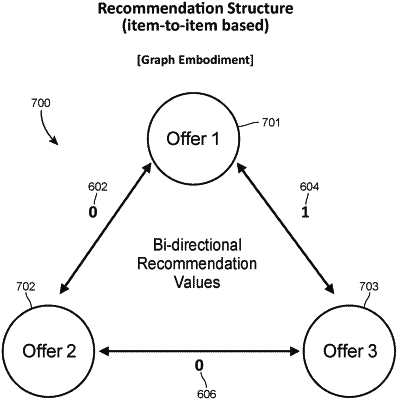| CPC G06Q 30/0282 (2013.01) [G06Q 30/0201 (2013.01); G06Q 30/0205 (2013.01); G06Q 50/01 (2013.01)] | 20 Claims |

|
1. A recommender system for generating efficient iterative reduced bi-directional data recommendation structures, the recommender system comprising:
a recommender server comprising one or more processors and one or more memories,
wherein the recommender server further comprises computing instructions that when executed by the one or more processors cause the one or more processors to:
aggregate a plurality of ratings vectors, each ratings vector associated with a vector type, and each ratings vector containing one or more content ranking metrics, the content ranking metrics associated with one or more users;
generate at least two similarity pairing values from the plurality of ratings vectors, each similarity pairing value generated by similarity mapping between a first ratings vector and a second ratings vector;
generate a reduced bi-directional data recommendation structure having a reduced data structure comprising a single similarity pairing value instead of the at least two similarity pairing values and based on the similarity pairing values, the reduced bi-directional data recommendation structure comprising one or more data objects accessible by a bi-directional look-up interface; and
return a bi-directional recommendation value determined from the generated reduced bi-directional data recommendation structure, after receiving a lookup request initiated by a client device via a computer network for either the vector type of the first ratings vector or the vector type of the second ratings vector.
|